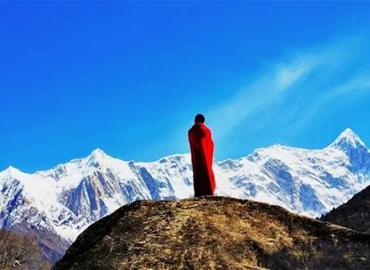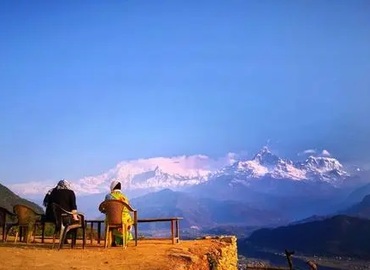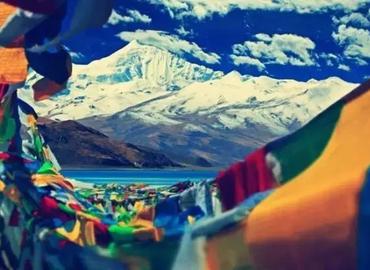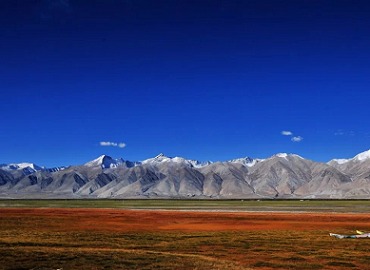Tibet Scenery
- Eric
- Last Updated : 11/28/2023
Tibet is known as the roof of the world. Not only is there a devout faith, but there's also majestic scenery that can only be created on top of the world. From the highest mountain to the deepest canyon, Tibet describes the magic of nature with its magnificent landscape. Monasteries are also an important part of Tibet scenery as the natural scenery here has already merged with temples, believers, prayer flags, and Tibetans. Below are the top-rated Tibet sceneries you should never miss!
Mount Everest
If you are awed by high mountains, you would surely be thrilled by the highest mountains of Tibet. Mount Everest is located at the border between China and Nepal. It's not only the highest peak of the Himalayan Mountain Range but also the highest mountain in the world, standing at an incredible 8,844.43 meters above sea level. Within 20 kilometers of it, there are 40 peaks at an elevation of 7,000 meters, even 8,000 meters above sea level, forming a magnificent scene of rushing peaks. Mt.Everest is also the center of China's Everest Nature Reserve and the Nepal National Park.
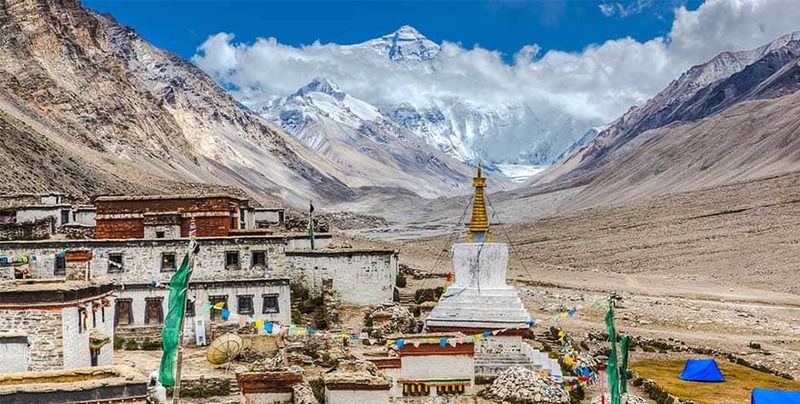
The Potala Palace
The Potala Palace is the most famous landmark of Tibet. Standing on one side of the Red Mountain (Marpo Ri), Potala palace is an impressively large scale building complex in Tibet’s capital. As the symbol of Tibet, the Potala Palace is a holy place in the hearts of all pilgrims. Potala Palace was built starting from 637 AD and it was the imperial palace of Songtsen Gampo. Since 1645, Potala palace becomes the abode of the Dalai Lama and the center of religious authority in Tibet. There are countless precious treasures in Potala Place and it’s a true place of arts. Now it's a UNESCO World Heritage Site.
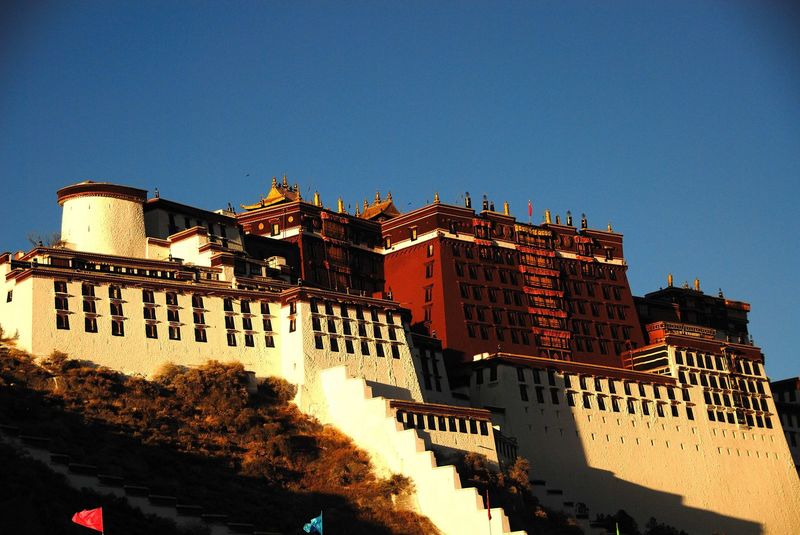
Jokhang Temple
Jokhang Temple was built in the 7th century AD and is located at Barkhor Square in Lhasa. It is the most sacred temple of Tibetan Buddhism. Jokhang Temple is an attraction that you must see during your Lhasa tour as it's the spiritual heart of Tibet. Built by King Songtsan Gampo, this temple has a remarkable architectural style that mixes the Tang Dynasty and Indian Vihara Architectural designs. It also has a tinge of Nepalese architectural influence. Jokhang is a temple with the most worshippers in Tibet. You can see lots of devout believers kowtow in front of the temple; even the bluestone floor left a deep impression. Thousands of butter lamps leave traces of the years and pilgrims. This temple is also a UNESCO World Heritage Site.
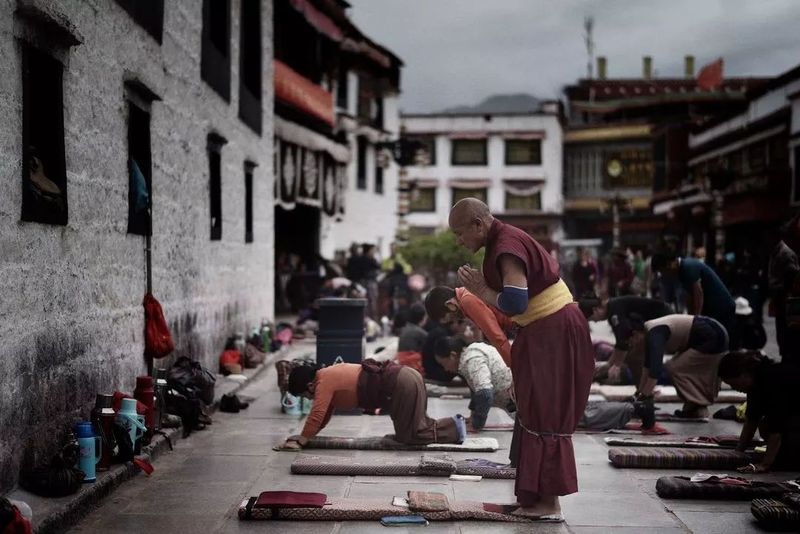
Lake Namtso
Namtso is one of the "Top Three Sacred Lakes" in Tibet. It is the first deity lake of the ancient Buddhist dharma-Yongzhong Bon religion so it's one of the famous Buddhist shrines in Tibet. Lake Namtso also has the reputation of being the highest saltwater lake in the world with an elevation of 4,718 meters. The quiet and large Namtso Lake, surrounded by snow-capped mountains, is adjacent to the blue sky. Moreover, there's a temple called Tashi Temple on the Tashido Peninsula in the center of the lake attracting many worshippers. Especially during every Tibetan Year of the Sheep, hundreds of believers come to make pilgrimages.
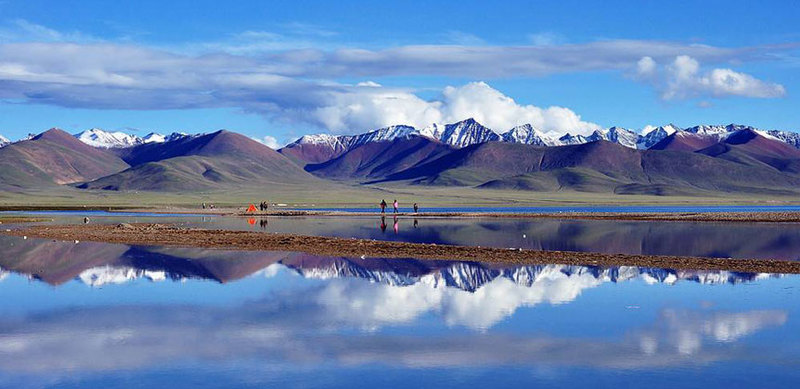
Lake Manasarovar
Lake Manasarovar is located in Purang County in the Ngari area. Lake Manasarovar is one of the top three holy lakes and one of the highest freshwater lakes in Tibet. In Tibetan, "Lake Manasarovar" means "invincible jade lake". Lake Manasarovar is the holiest lake in Buddhist’s heart. The holy water can wash away the annoyance and sin of one's soul in believers' minds. Interestingly, there's saltwater later just one path next to Lake Manasarovar called Lhanag-tso, which is known as "Ghost Lake". In Tibetan, " Lhanag-tso" means black and poison lake. So you can see such a scene: there are flourish aquatic plants and innumerable waterfowl at the side of Lake Manasarovar. But at the side of Lhanag-tso, there is complete silence. Lake Manasarovar is most visited when you worship Mount Kailash—the most sacred mountain in the world.
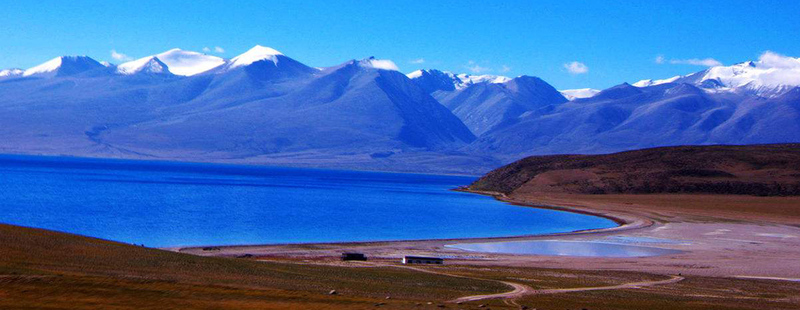
Mount Kailash
Mt.Kalish is located in the remote west of Tibet at an altitude of 6,638 meters. Well, it is not just the most sacred mountain in Tibet, but also the most sacred mountain in the world. Pilgrims of four religions trek to this sacred mountain every year because they believe that it is the center of the universe. They make a Kora—a sacred pilgrimage—around this mountain. And It's also the place that many explorers always aspire to adventure. However, no one has ever been able to board the mountain, or no one has ever dared to break the center of the world. It is a snow-capped mountain for the whole year that stands tall and upright stately in the Himalaya valley.
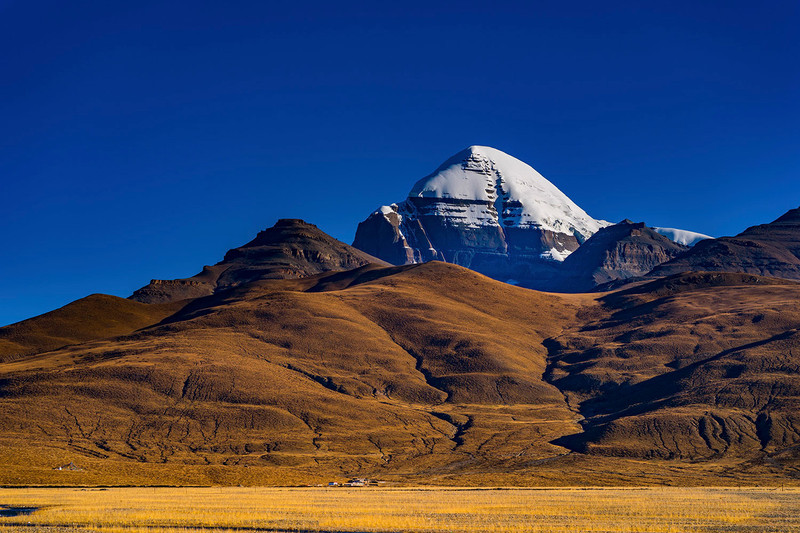
Ruins of the Guge Kingdom
Tibet has an ancient kingdom referred to as the "Guge Kingdom.” It's a magnificent castle and stands at a 300 meters high hill in Zanda County of Ngari area. In the 9th century AD, a fierce struggle for the throne occurred in the interior of the royal household after the death of the last King of the Tubo Dynasty. The descendants of the royal family escaped to Ngari and established the Guge dynasty. Guge dynasty was the most prosperous kingdom in the Himalayas and it was called ‘the East Florence’. Until the 17th century, the Guge dynasty was ruined because of the war and the variation of the environment. Then such a vast Guge dynasty disappeared completely. But the magnificent site and artistic wall painting are still awe-inspiring till today. In the west of Tibet, Guge dynasty possessed a mature and glorious culture but disappeared suddenly one night. After several centuries, people didn’t even know the Guge dynasty existed before and it only left various mysteries for people to explore.
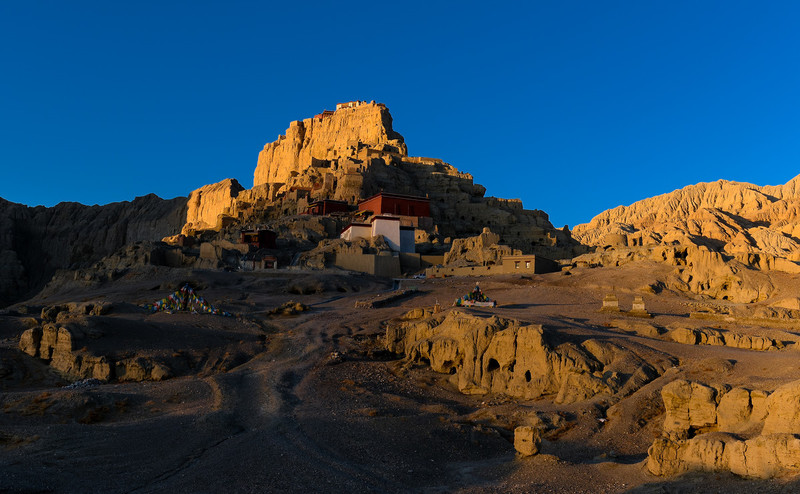
Yarlung Tsangpo Grand Canyon
Yarlung Tsangpo Grand Canyon is the deepest canyon in the world and also known as the most beautiful canyon in China. Yarlung Tsangpo Grand Canyon stretches away for 505 kilometers, the average depth is 2,268 meters and the deepest point is 6,009 meters. Yarlung Tsangpo Grand Canyon is very humid and there's a thick forest with various wild animals and plants. It's no doubt that Yarlung Tsangpo Grand Canyon is an amazing natural scenery combined with high mountains, great bends and enormous waterfall.
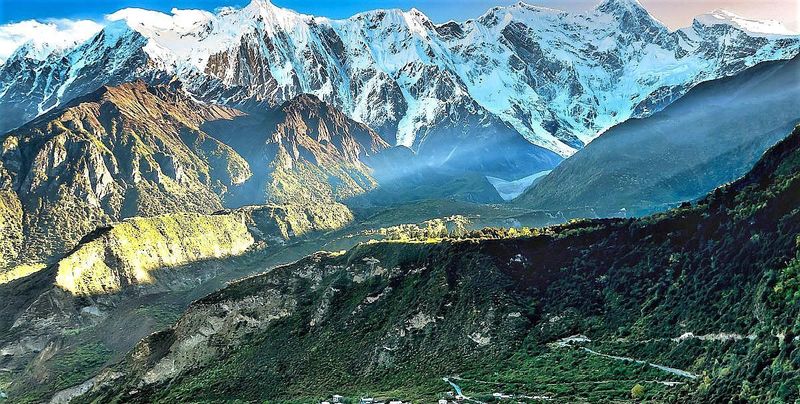
Lulang Forest
Lulang forest is located 88 kilometers away from Bayi town in Nyingchi area. The meaning of ‘Lulang’ in the Tibetan language is the valley of the Dragon King. Lulang forest is a typical plateau forest and the mountains were covered by boskage from high to low, such as dragon spruce and pine trees. Lulang forest is so beautiful that people call it "the lands of the Gods".
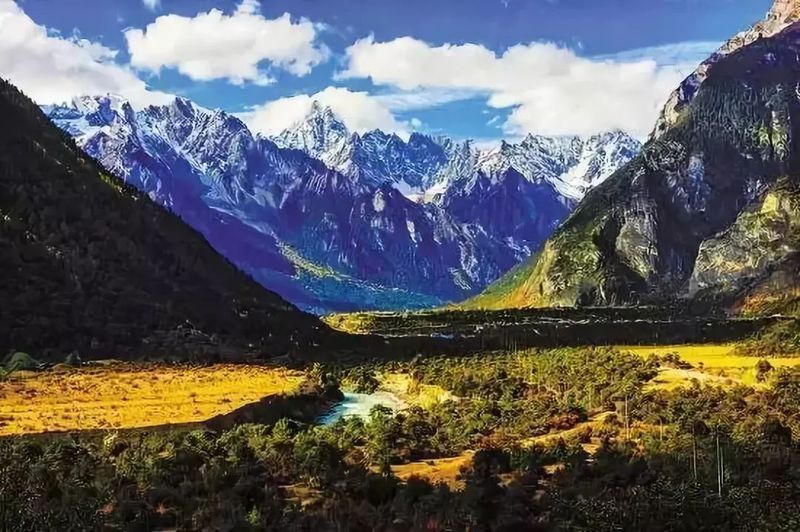
Lake Yamdrok
Besides Namtso and Manasarovar, Yamdrok Lake is also listed as the top three holy lakes. Yamdrok Lake was situated at Shannan Prefecture. And it’s about 70 kilometers distant from Lhasa. If you are going to visit EBC, chances are, you can drop by Lake Yamdrok. Tradition has it that this lake's origin is from the pearls of a goddess' earrings. Yamdrok Lake has unique natural scenery and combines the lake with villages, islands, pastures, wild animals, temples, snow-capped mountains, and blue sky, so it's truly enchanting!
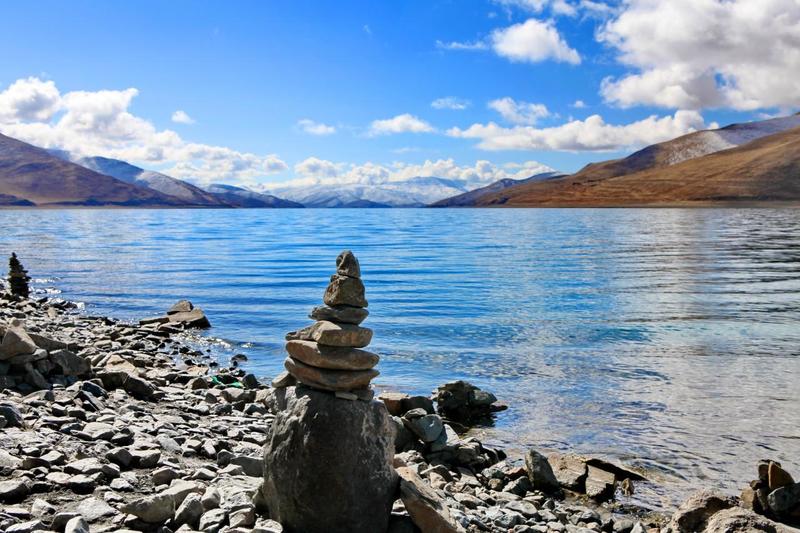
Email response within 0.5~24 hours.



